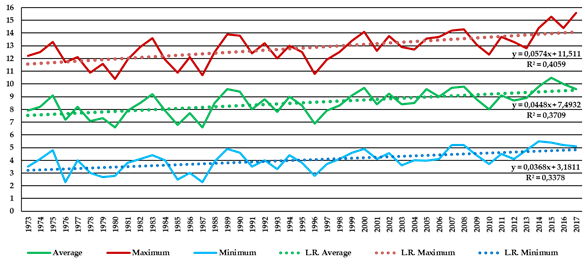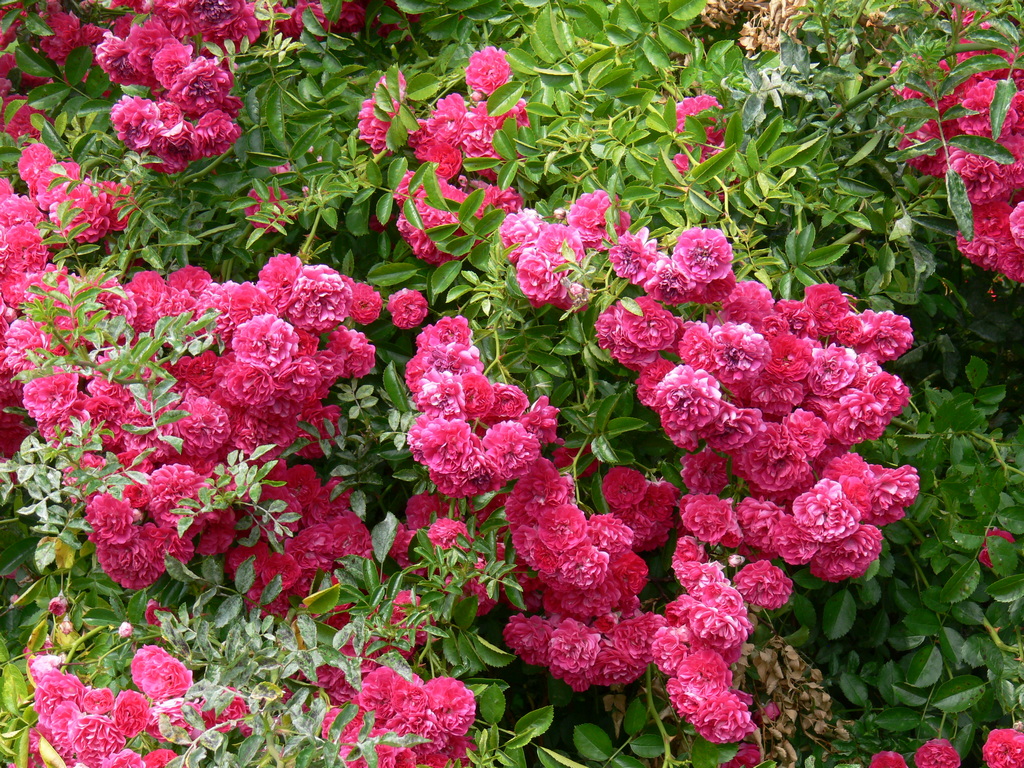Climatic changes affect the possibility of plant cultivation, yield structure and, consequently, the preservation of biodiversity of cultivated species and varieties, including ornamental plants. Warsaw is located in a temperate climate zone, with features of continental and oceanic climate. The response of rambler climbing roses flowering once a year to changing climatic conditions was studied in connection with their frost hardiness and ornamental value. The paper presents the results of observations carried out in 2000-2016 for 15 selected varieties. The frost damage to shrubs, early phenological stages (bud bursting date, leaf development), beginning, full and end of flowering were recorded. An analysis was carried out, which shows that changes in the appearance of phenological phases and frost damage were the result of the course of weather conditions in the autumn-winter-spring period. The course of weather during this period affects the processes of hardening and preparation for the dormancy period necessary for temperate zone woody plants to survive winter. The course of weather in the period after winter dormancy is also important. Frost damage affected the flowering and growth of roses differently, depending on the extent of pruning needed in the spring. The varieties with the greatest tolerance to negative winter temperatures were: 'Lykkefund', 'Polstjårnan' and 'Semiplena'. In recent years (2014-2016), when winters were mild, no damage caused by negative temperatures was recorded, unlike in previous years of observation (2000-2006 and 2009-2013). Reintroduction of varieties of historical climbing roses - rambler, can contribute to the preservation of biodiversity of ancient varieties of ornamental plants. These roses can be an attractive proposition for green areas in the lowlands of Central Europe.
Monder, M.J. Response of Rambler Roses to Changing Climate Conditions in Urbanized Areas of the European Lowlands. Plants 2021, 10, 457. https://doi.org/10.3390/plants10030457 (IF 2,762)

The mean monthly temperatures (°C) (average, minimal, and maximal) in the years 1970-2016 measured at the Warsaw-Okęcie meteorological station (10 km in a straight line from PAS Botanical Garden) and the linear trend lines in this period.

The chosen phenology stages of observation of shrubs: (a) BCH 07-beginning of bud breaking, first green leaf tips visible; (b) BBCH 11-first leaf pair unfolded, not yet at full size, leaves are light green and/or bronze; (c) BBCH 60 601-beginning of flowering: about 10% of flowers open; (d) BBCH 63 605-full flowering: at least 50% of flowers open; and (e) BBCH 69 609-end of flowering: all petals have fallen.
post
post
2021-03-09 09:24:17


